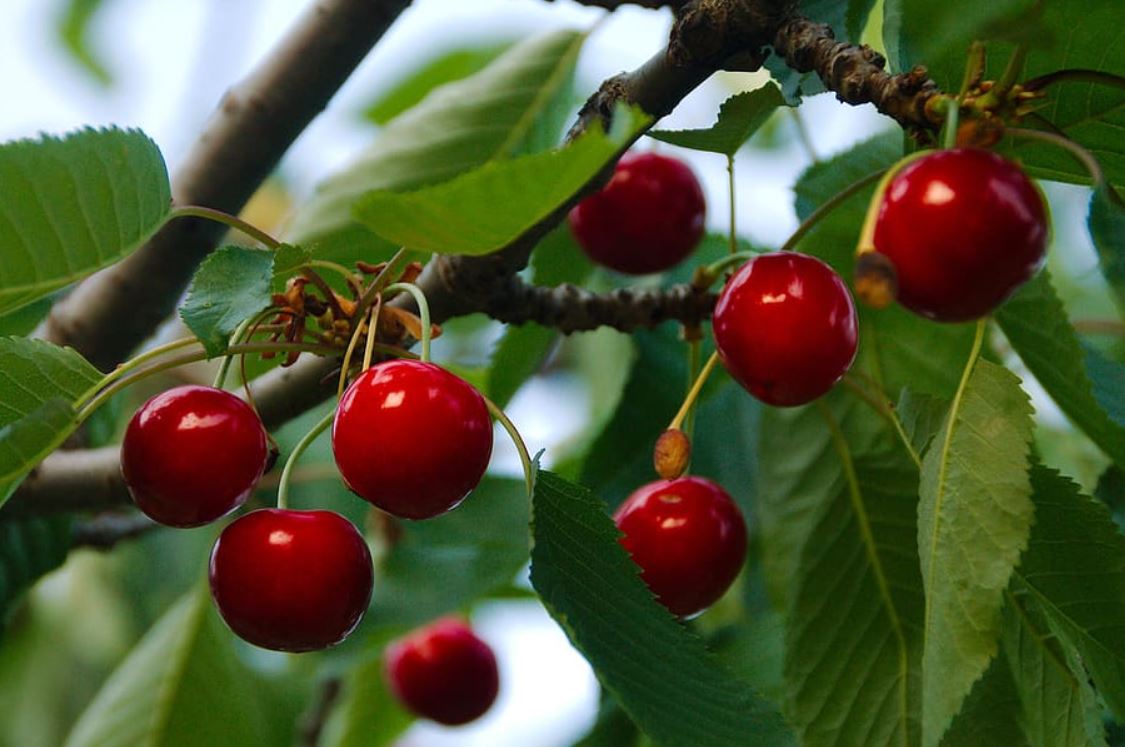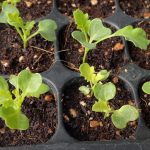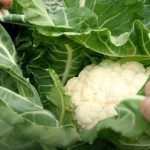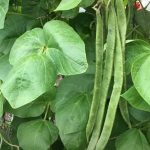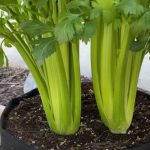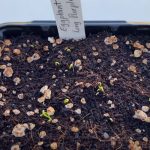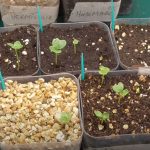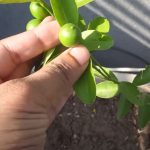Do you know cherry trees can survive under 45oF? Welcome to How to Grow Cherry Tree from a Seed 101! Like lemons, apples, or plums, cherry trees are relatively easy to care for, but many greenies have yet to succeed in making them sprout not being patient enough and knowing their basic living conditions.
So what is the best way to grow a cherry tree from seed? Learn all the tricks, tools, and ideal conditions for planting a cherry tree here!
Overview
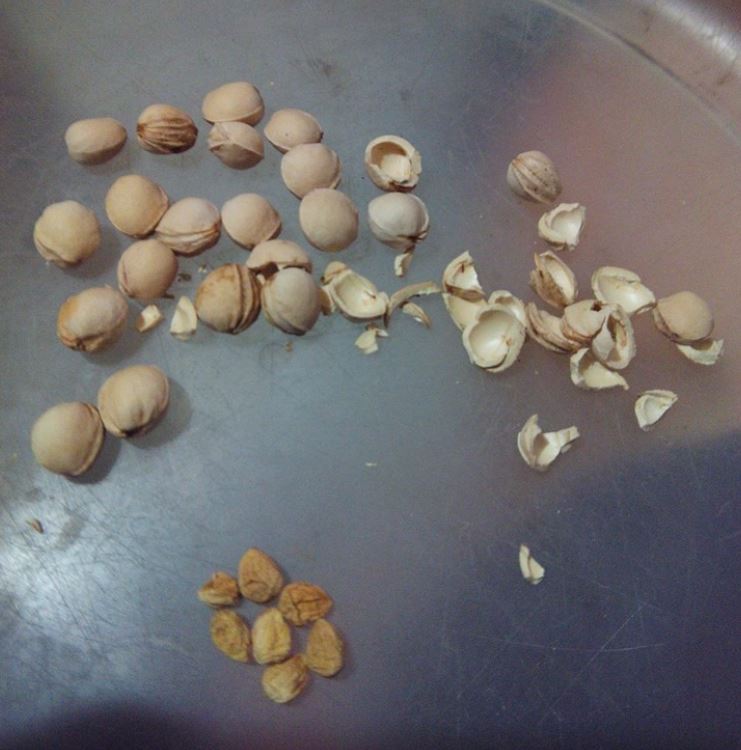
Level of difficulty: Easy
Nutrition: Cherries are filled with fiber, no matter what type people consume. Some of the highest components of these red fruits are dietary fiber, sugar, calcium, vitamin C, potassium, and magnesium.
A standard daily consumption of 50 to 100 grams is recommended when paired with other fruits, but if you are eating cherries for their health benefits, 250 grams per day is sufficient to support the improvement of gout or inflammation. Better heart health, sleep quality, and skin elasticity are also expectable results.
What if you consume too many cherries? Gas, nausea, and stomachache are common symptoms. Some develop allergic reactions, but these are extreme, and only surge when consumed in large amounts in one go!
Climate: Cool climate is the best growing condition for cherries. Most varieties need moderate winter temperatures and not too hot summers.
Height: The height of cherry trees depends on the species/hybrid itself and the care that the planters provide. A standard cherry tree can grow up to around 33ft if not pruned, a semi-dwarf type can reach 15ft tall, and a dwarf hybrid can reach 8ft.
Time to fruit: This also depends on the variety and care, but a typical sweet cherry tree can take anywhere from 4 to 10 years to start fruiting, with 4 years being considerably early after seedling. Pick a dwarf cherry variety if you want to enjoy the red fruits sooner as they usually take only 2-4 years to start fruiting.

Lifespan: Some varieties last longer than others. A sweet cherry tree lives longer than a sour cherry tree. The former tends to last 20–30 years, while the latter usually doesn´t exceed the 20-year mark. Among all varieties, black cherries hold the top spot as the longest-lived species, being able to survive for 100–250 years.
Tips For Choosing Cultivars And Where To Buy Cherry Seeds
Firstly, you need to choose cultivars that produce cherries with flavors to your liking and can survive in your area’s climate. I have just the tips!
Choose your preferable cherry hybrid
You can pick sweet or sour cherries, depending on your taste. But keep in mind that sweet cherry trees have a longer lifespan of up to 30 years, while the sour types don´t pass their 20s. So if you want a variety that lasts all the way through, pick a sweet cherry species. Some of the best varieties of sweet cherries to grow are:
- Bing cherry
- Rainier cherry
- Lambert cherry
- Sweetheart cherry
- Lapins cherry
With that said, sour cherries are easier to grow as they can withstand rainy seasons better than sweet cherries. And if you are an avid cook, you will prefer sour cherries to sweet ones since their flavor comes out brighter and more complex, while sweet cherries lose their flavor and don´t bring the same pleasant flavor notes as cooked sour cherries. The best sour cherry species to plant are:
- Meteor Sour cherry
- Montmorency
- Early Richmond cherry
Where to buy cherry seeds
Cherry seeds can be found on many online platforms where gardeners put their seeds on sale. The benefit is that it’s easier to encounter the specific species you want to grow, but this also means that greenies have to work with dry pits, which are obviously less easy to germinate than fresh pits.
I recommend these online stores where you can choose from a variety of cherry species:
Preparation
You don’t have to prepare too much to grow cherry trees from seed. Here is everything you need!
Tools: Paper towel (tear-resistant is recommended), water, plastic container, spray bottle, plier, or large nail clipper to remove the pits
Containers: For seedlings, you can use tall plastic cups of 10 to 16oz so that the first roots can develop to their fullest potential. The cups should be filled with well-drained soil and soft enough to poke drain holes at the bottoms.
When the plants grow bigger, transfer them to larger containers. You can choose nursery or ceramic pots since the taproots of cherry trees can be invasive if propagated too much with a root pruning container. A pot of 15–20 gallons is suitable for a 5ft young cherry tree.
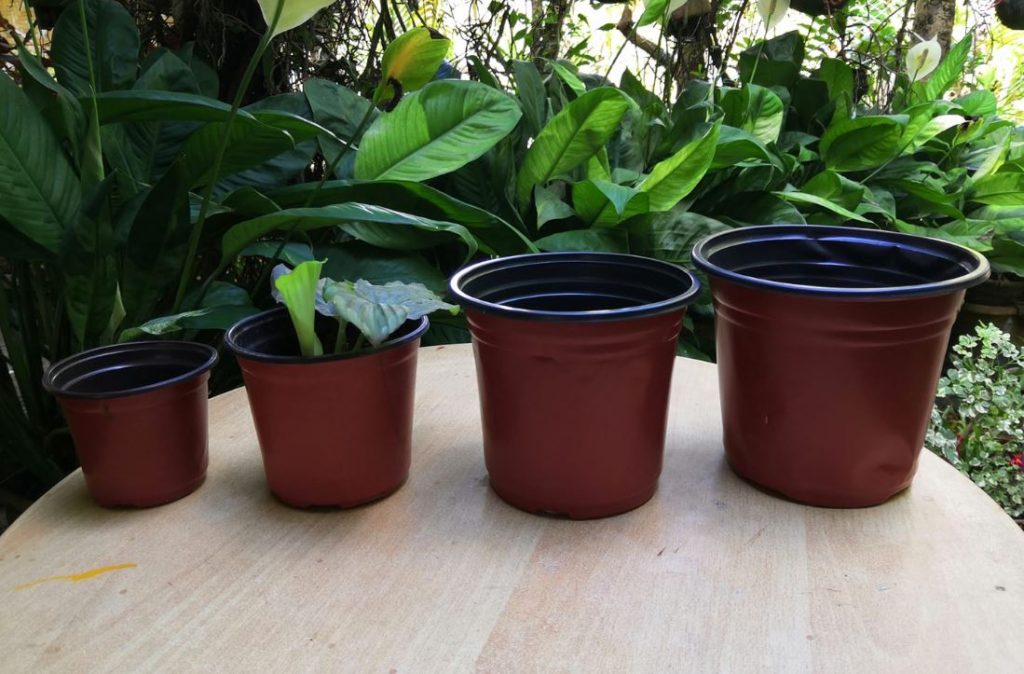
Planting Guide On How To Grow Cherry Tree From A Seed
There are 6 stages to planting a cherry tree, with many requirements along the way. I will give you the full instructions with extra tips below!
Germination
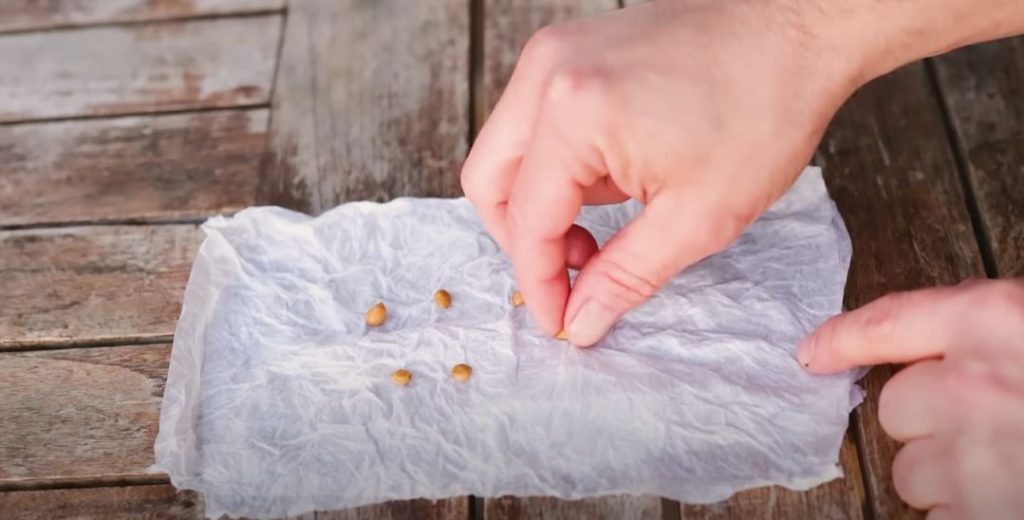
- Step 1: Prepare about 5 cherry seeds/pits for imbibition. If you use dry cherry pits, make sure to remove the tough endocarp layers to reveal the seeds. Soak them in water for 6 hours to provide them with enough moisture. If you soak the entire seeds with the pits, leave them in water for 12 hours and then remove the pits. You can use warm water to accelerate the process, but not too hot!
This step won’t help you check for seeds’ viability, so don’t rely on the floating or sinking state of the seeds to determine fertility.
- Step 2: Place a big paper towel over a flat and clean surface and strategically position the seeds you have prepared on one half of the towel. Make sure that the seeds are separated from each other so that the seedlings have enough space to sprout and grow.
- Step 3: Fold the other half of the paper towel over the seeds and spray the entire bundle with a spray bottle until everything is moist, not wet! Avoid soaking the seeds with too much water because it leads to rotting.
- Step 4: Transfer the bundle into a plastic container (Tupperware) with a lid or a bowl and wrap it in cling film. I heavily suggest using Tupperware because it’s more convenient when you moisturize the paper towel that contains the cherry seeds.
- Step 5: Place the container in your refrigerator but avoid the direct cold air source. Leave it there for 3 months. During this period, open the container from time to time to check on the seeds’ progress and provide moisture if necessary.
After the 3-month span, check to see which seeds have sprouted and throw away those with the seed coats completely intact since they aren’t viable.
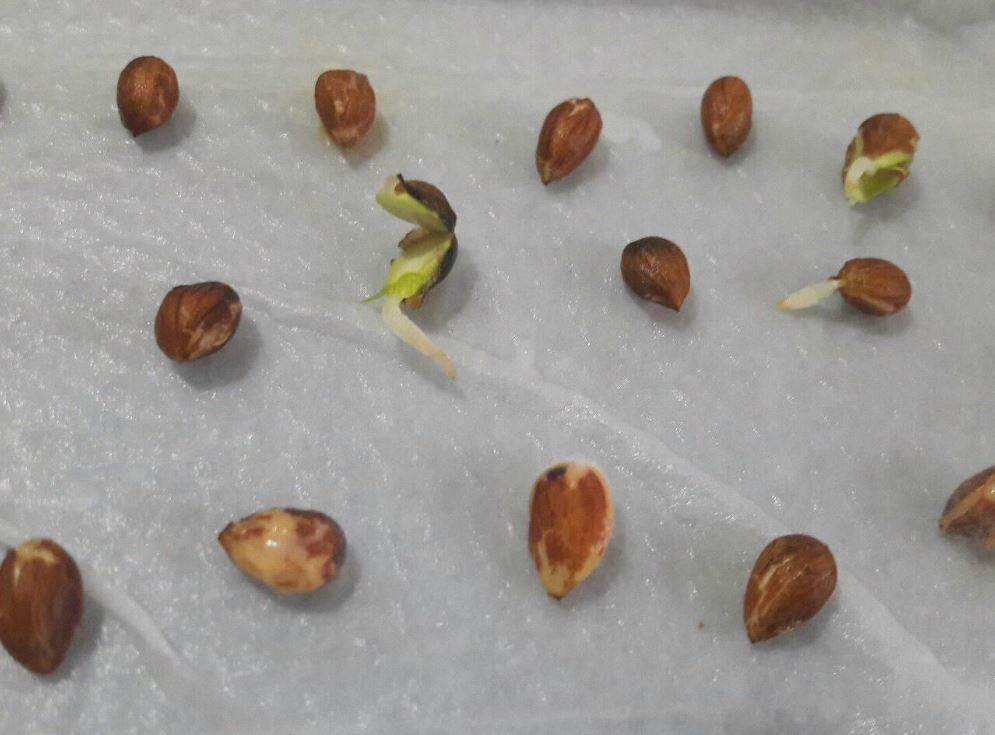
Seedling
When the seedlings appear, it’s time to transfer them to the soil. You can use a small plastic cup as the starting system. The soil must be acidic with a pH level of 6 to 7. It also must be well-drained, loamy, and moist at the same time. You can water the seedlings abundantly, but a well-drained system is obligatory to avoid roots’ rot.
Water when the surface of the soil seems dry and adjust the watering schedule depending on how fast the soil dries out. You don’t have to water your cherry seedlings daily. Once every week or every 2 weeks should be enough!
Transplanting to containers or garden beds
- Step 1: Prepare the pots or garden beds with well-drained and loamy soil and add a bit of low-nitrogen fertilizer to support your cherry tree’s growth. Mix and stir the dirt/soil, and pat it loosely. Make sure not to pack it too tight, especially if you want to transfer the seedlings to containers instead of garden beds.
- Step 2: Carefully remove the seedlings from their original container without damaging their roots. You don’t have to remove the old dirt/soil from the roots.
- Step 3: Place each seedling in its respective container/land lot. Add more soil to cover all the roots and the old dirt bulks of the seedlings. Then, pat the soil so that it is tighter but still loamy.
- Step 4: Water the plants frequently after repotting so that the 2 sections of dirt merge and all the root systems are covered.
Loamy and well-drained soil is recommended for cherry growing
Adult plant
After 4-5 years from reaching the young tree phase/sapling, we get a short adult cherry tree. By this time, caring for the tree is simpler and doesn’t require much upkeep. Leave the tree outdoors so that it gets enough natural sunlight and water when the surface of the soil seems dry to avoid drought stress.
If you grow your cherry tree indoors, make sure to place it next to a direct sunlight source. The lack of sunlight will stunt the growth. So if you want to enjoy the flowers and fruits soon, provide your adult cherry trees with abundant sunlight.
Pollination
Most of the time we rely on insects, mostly bees, to pollinate cherries. But sometimes nature decides to take the opposite direction and doesn’t offer gardeners’ bees as a helping hand. That’s when hand pollination is required.
Most sweet cherries are not self-fruitful, which means they can’t pollinate with their own pollen, so they will need those of another species. Some of the most common cherry pollinators are Lapins, Stella, Sunburst, Sweet heart, and Black Gold. Use a soft brush to transfer the pollen from these species’ stamens to your main self-unfruitful cherry tree flowers’ stigmas.
Harvest
Cherry trees mostly flower in spring and their fruits ripen during the summer months, mainly June and July. Of course, the harvest seasons depend on the variety, climate, and growing conditions as well. Avoid pulling the cherries from the branches, instead, use scissors or a pruner to gently remove the cherries with the stems from the branches.
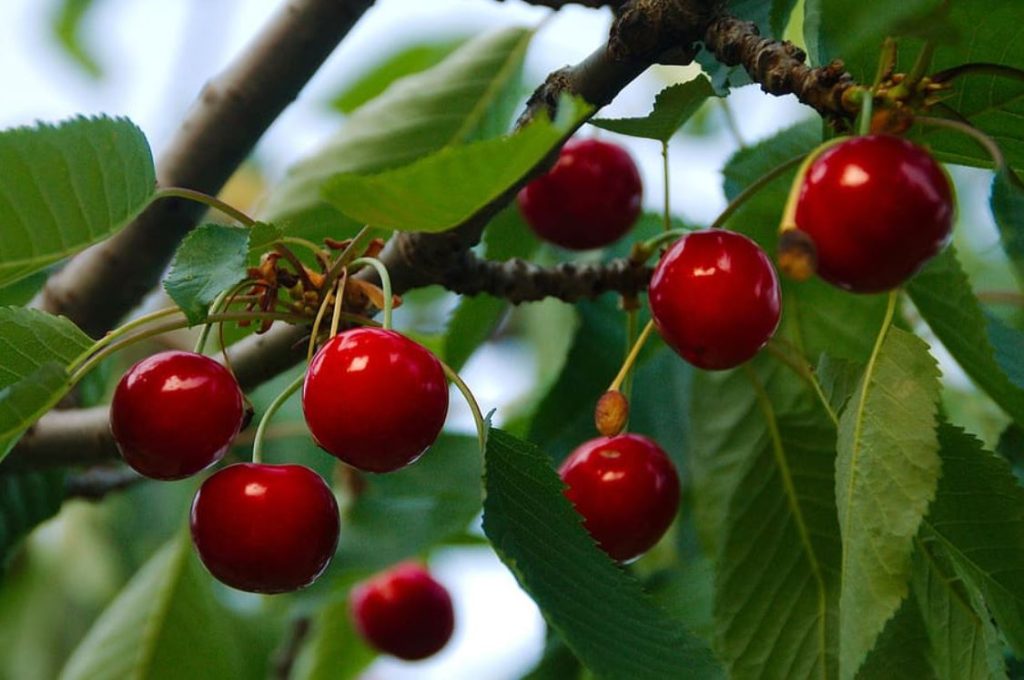
Furthermore, check to see if your cherries are late or early harvest to enjoy their optimum ripeness and flavor. Sunburst, Somerset, Sonata, and Lambert are some of the late-harvest hybrids. WhileEarly Red, Santina, Larian, and Ruby are some of the early harvest varieties.
How To Care For Your Cherry Trees
There are some important care tips that you need to follow to keep your cherry trees healthy and thriving. Learn the ways of light, temperature, water, and more!
Light
Despite preferring a cool climate, cherry trees require a lot of sunlight to grow. In general, greenies need to provide their indoor cherry trees with at least 6 hours of direct sunlight every day. What are the consequences of light deprivation? Fewer flowers and bland fruit flavors are predictable outcomes.
Temperature
As I mentioned, each cherry variety withstands different ranges of temperatures. Most can survive when the temp hits as low as -45oF, but each hybrid thrives best in their respective temperature parameters. For example:
- Bing cherry (32 – 45oF)
- Rainier cherry (-30 – 20oF)
- Lambert cherry (-20 – -10oF)
- Sweetheart cherry (-25 – 30oF)
- Lapins cherry (-20 – 20oF)
- Meteor Sour cherry (-30 – 15oF)
- Montmorency (32 – 45oF)
- Early Richmond cherry (-25 – 30oF)
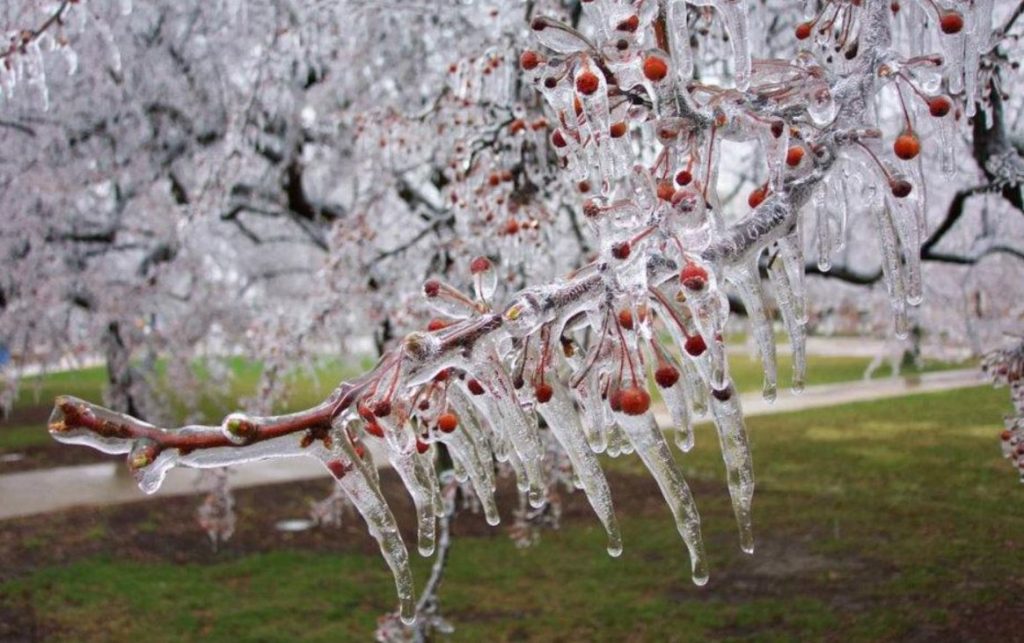
Humidity / water
Cherries don’t need too much water if planted on open ground and receive over an inch of natural rainfall every 7 to 10 days. But if planted in a pot, users need to maintain a good watering schedule. During the first years of being a sapling, your cherry tree needs 2 watering sessions per week. When the tree has reached the adult stage, a deep watering once every week or 2 weeks is recommended.
Diseases / bugs
Some common diseases found in cherry trees and bugs that attack them are:
- Yellow leaves: Lack of water
- Silver leaves, black knots: Fungal infection
- Cytospora Canker: Drought, insect feeding, fungus, etc.
- Pests: Aphids, spider mites, cherry blackflies, Apple Leaf Mining moths, etc.
Fertilizer
Cherry trees don’t need much nitrogen in their diet, so a granulated fertilizer of 5-10-10, or a balanced NPK of 10-10-10 is recommended. We only have to fertilize an adult cherry tree once per year in early spring before the flower blooms for the best results. As for young saplings, more frequent fertilization once every 2-3 months yields more impressive growth.
Follow my instructions, and you should know how to grow cherry tree from a seed. Make sure to choose the right cultivar for your climate and preference. Remember, dwarf cherries are the best for indoors and quick harvest while semi-dwarf and standard cherries provide more quarts of cherries!
